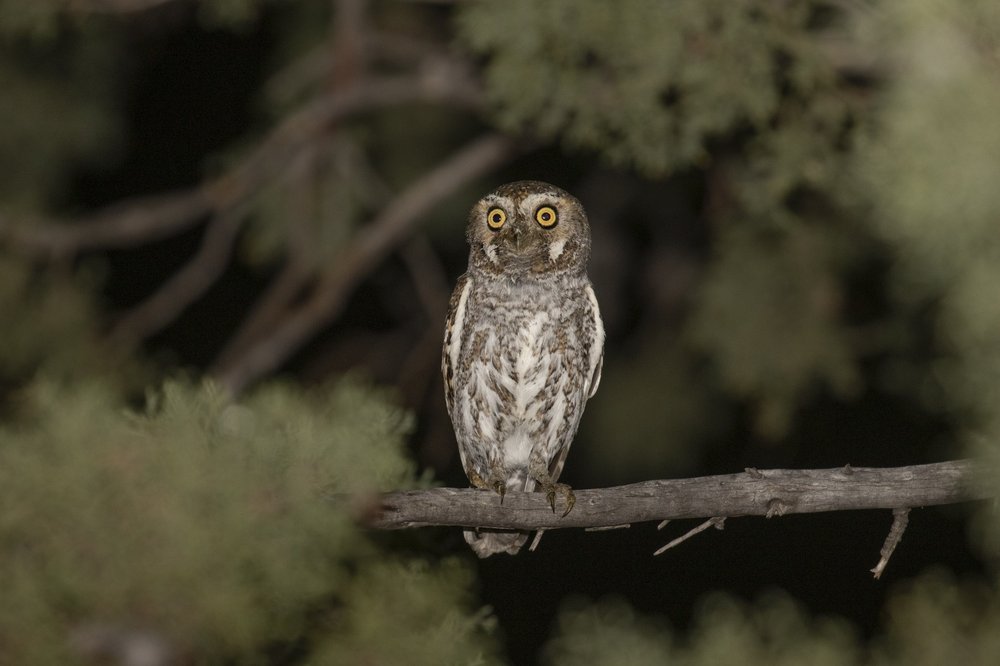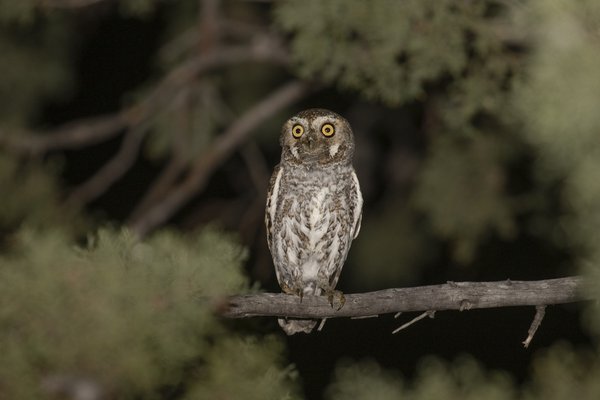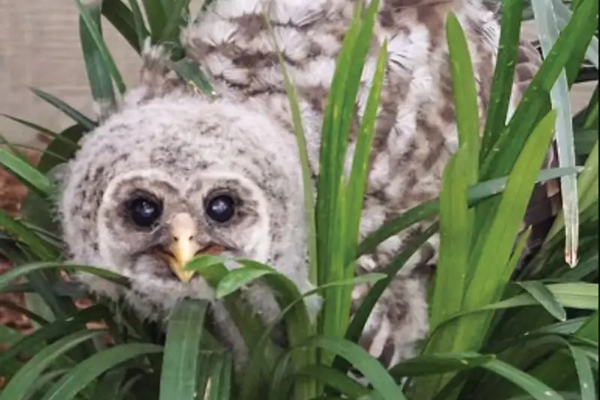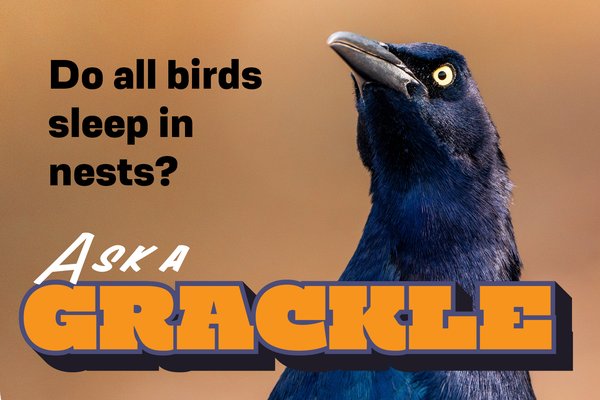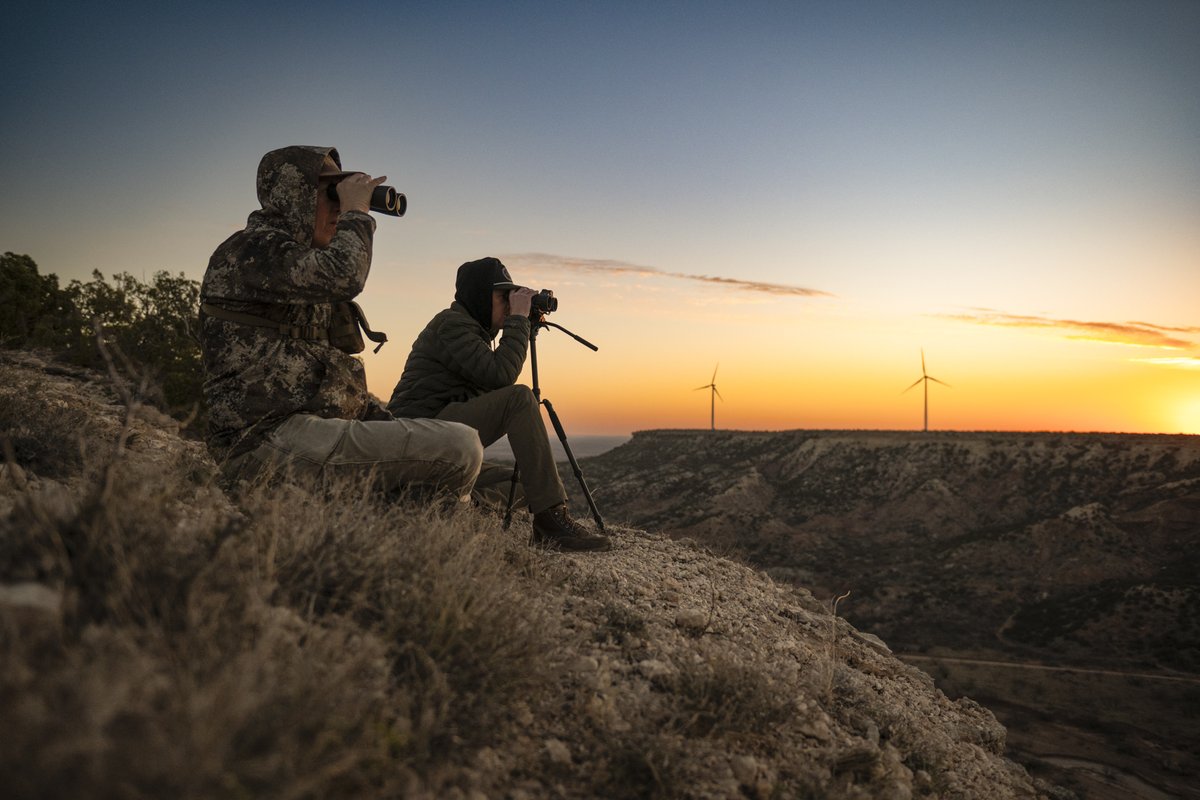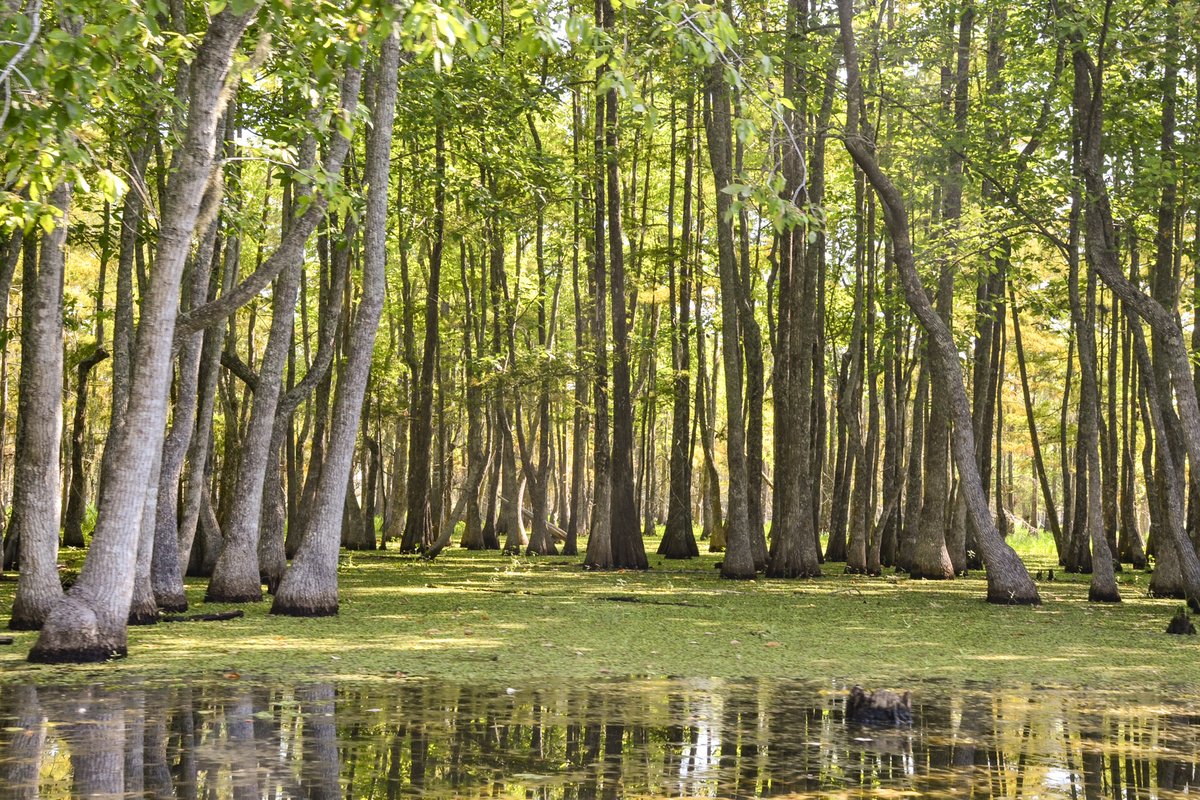I’m sitting on the cabin porch at the Davis Mountains Preserve, savoring a homemade margarita and soaking in stories like warm sunlight.
Around me, members of the Texas birding illuminati swap tales from the field, sharing stories of discovery during the early days when The Nature Conservancy began partnering with ranchers to protect these mountains. With each sip, the stories become increasingly mythic — flocks of nutcrackers wheeling through the canopy, the squeaky calls of pygmy nuthatches, and the first sightings of breeding gray and buff-breasted flycatchers where no one expected them. All belonging to a time I missed.
I feel as if I was born a generation too late, showing up in these mountains after the golden hour of discovery. It’s a particular ache, the yearning to be part of something formative. I know these mountains still hold secrets, but they’re quieter now. Swapping vignettes with my friends and birding mentors, I realize that the story here isn’t entirely written. There’s still wonder to be found in the Davis Mountains. I just needed to go higher, stay longer and trust that these rugged canyons would share new secrets.
My focus shifted to the pursuit of a particular group of birds — the little-known high-elevation owls of the Davis Mountains. Some of these elusive species have been spotted only a few times by a few Texans. I wanted to learn more, and little did I know that some new discoveries awaited me.
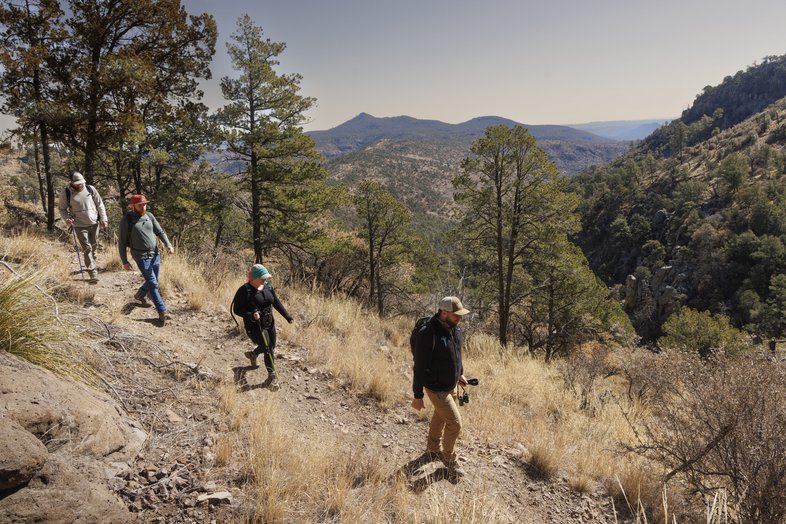
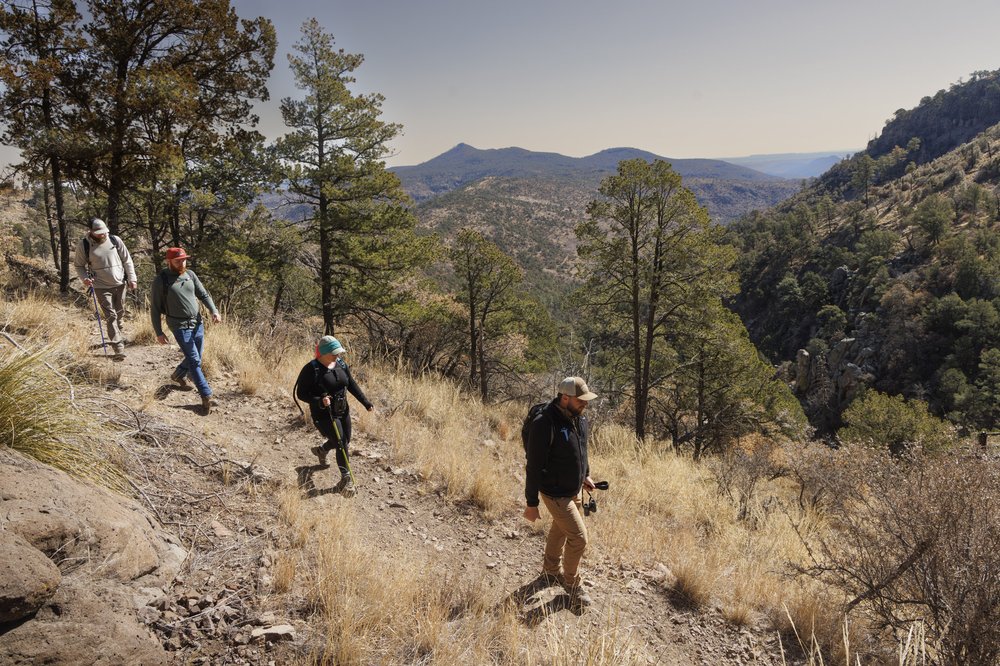
Four researchers set out on a hike in the high elevations of the Davis Mountains.
Sonja Sommerfeld
Four researchers set out on a hike in the high elevations of the Davis Mountains.
Sonja Sommerfeld
The Thrill of Discovery
I couldn't change the decade I was born, but I could always chase discovery. One night a year earlier in the Davis Mountains, I had convinced these same friends to embark on a late-night trek to the high country. I was pursuing a bird I had heard only once deep in the Chisos Mountains of Big Bend, the elusive flammulated owl. The request required some bartering. With our morning bird survey wake-up calls around 5:30 a.m., we traded sleep for a shot at something rare.
We reached Limpia Chute just east of Mount Livermore during the witching hour, as the sky turned soft shades of violet and pink. From this height, we could see El Capitan and the Guadalupe Mountains glinting on the horizon, 95 miles from our perch near a small stand of aspens. And as dusk yielded to darkness, over the hush of the wind through the pines, we heard it: a low, muffled “boop.” The owl came close, drawn by our recordings of its call, and landed just meters away. Small. Secretive. Perfect. Even my seasoned companions were moved by this calm presence. That night didn’t answer anything, really. But it left me wondering: What else might be up here, waiting to be heard?
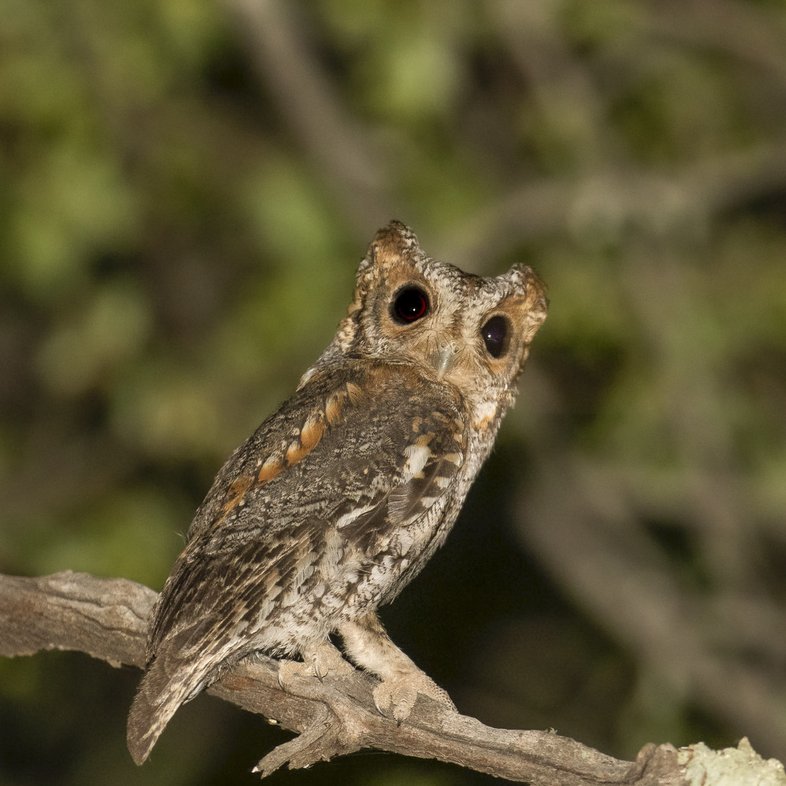
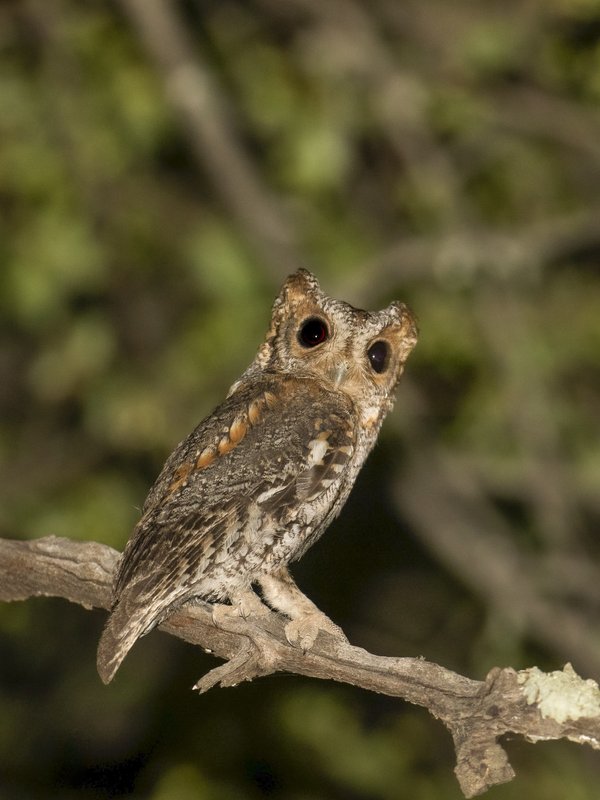
A flammulated owl sparked the author's journey of discovery.
Romey Swanson
A flammulated owl sparked the author's journey of discovery.
Romey Swanson
I’ve always been drawn to owls, and I started understanding why as I reflected on that night. Owls live in shadows, familiar to nearly everyone, yet known by few. Unlike most birds, they’re active under the cloak of darkness; their dramas primarily unfold while we sleep. Their human-like eyes, round faces and eerie silence create a sense of recognition that borders on reverence. Even our common owls, like the great horned or screech-owls, carry this peculiar charisma. You are just as likely to hear them calling from a suburban backyard as you are in the remote wilderness. Sensing their presence before a single sound gives them away can stop you in your tracks. That quiet weight, the unseen watcher in the night, hooked me. What began as a fascination quietly became a pursuit of passion. The more I learned, the more the Davis Mountains drew me to these denizens of the dark.
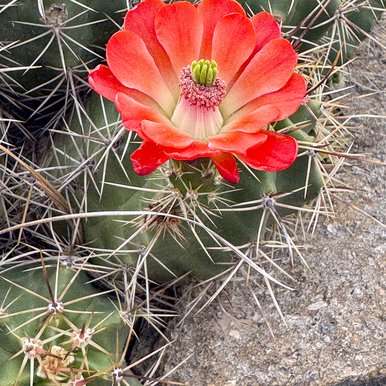
Blooming cacti on rock in Davis Mountains.
Sonja Sommerfeld
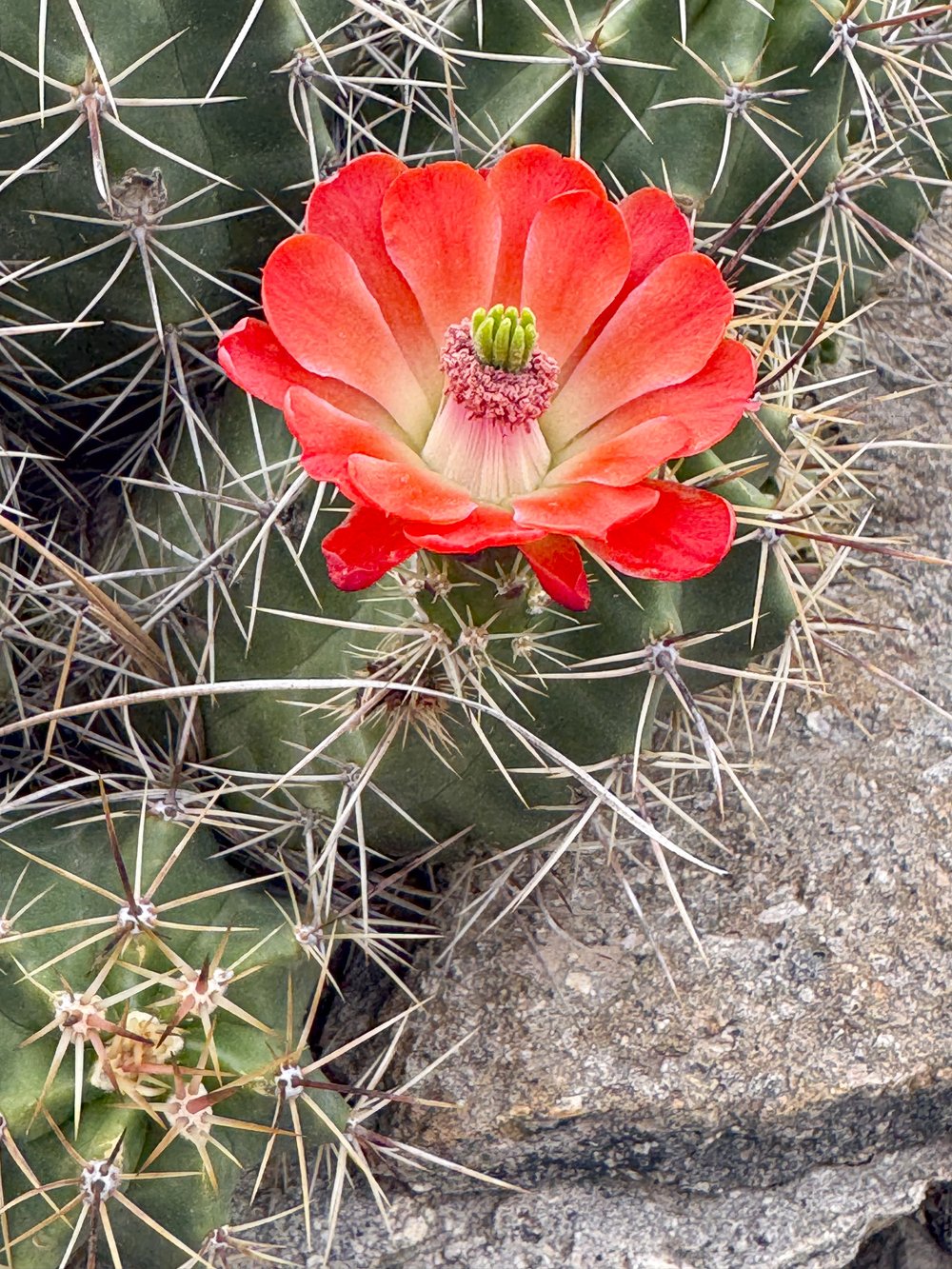
Blooming cacti on rock in Davis Mountains.
Sonja Sommerfeld
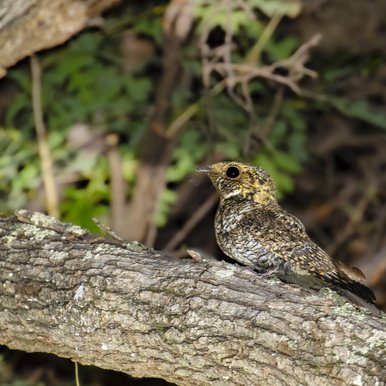
The song of the Mexican whip-poor-will heralds the coming of night.
Romey Swanson
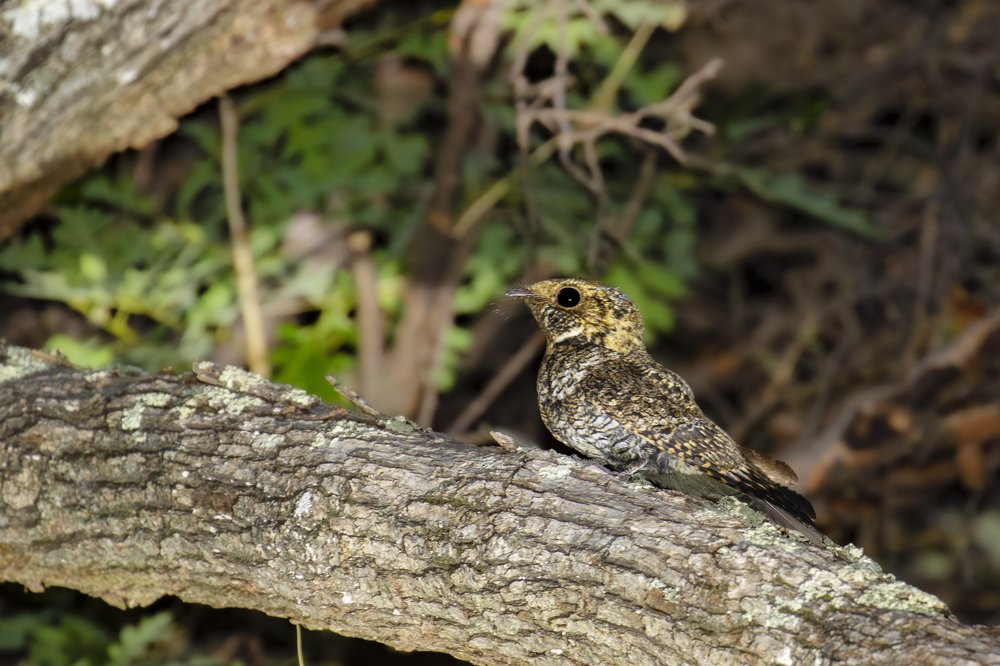
The song of the Mexican whip-poor-will heralds the coming of night.
Romey Swanson
A Changing Landscape
At heart, I am and always will be a naturalist — one fulfilled by nature’s beauty and driven to understand its complexity. My journey has grown from simply naming the Wild Others, those creatures that live beyond the reach of human routines, to understanding how they interact with their habitat, each other and us. My tools have evolved, too; alongside my notebook and field guide, I now use game cameras, recording units and wireless speakers — essential companions in my pursuit of owls and other elusive lives of the dark.
Some of the most meaningful discoveries begin not with luck but with the decision to try, like the night Rich Kostecke and I set out in search of a northern saw-whet owl and found one calling among the ponderosas as if it had been waiting for us all along.
Saw-whets have been occasionally heard in Texas, leading some to suspect they might breed in the state’s highest and most remote mountain ranges. That evening on the cabin porch, swapping stories and sipping margaritas, Rich and I realized it was time to stop saying, “They should look into that,” and agreed that “we” are the “they” who should look. As the cooling hours transitioned into dusk, we rattled up the rough jeep trail to Bridge Gap and hiked toward the aspen grove. The air hung soft and cool, lingering beyond the finality of sunset, finally broken by a nocturne of Mexican whip-poor-wills, nightbirds whose song heralds the coming dark. It was time.
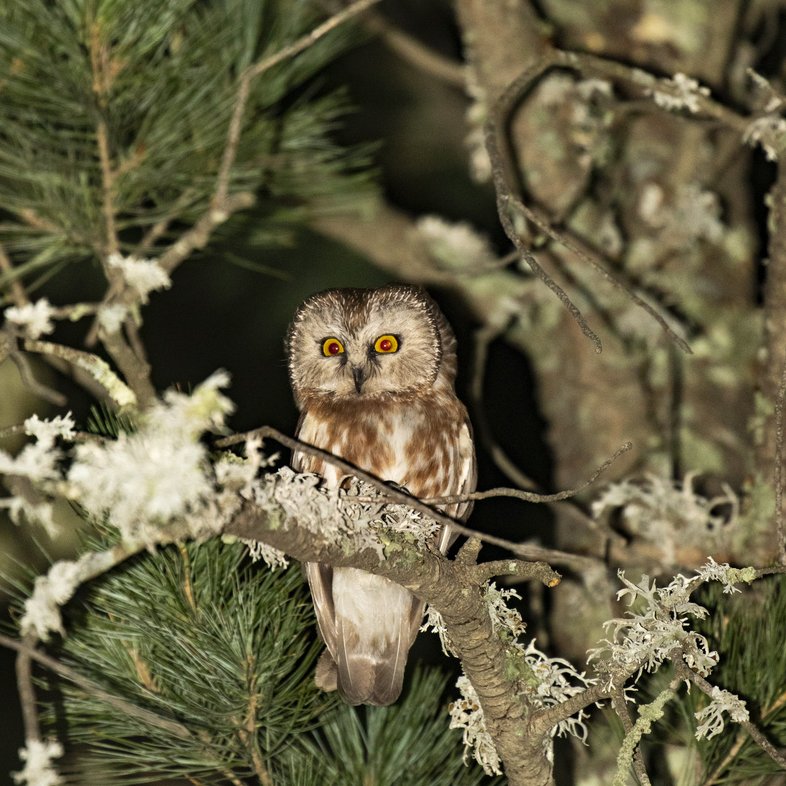
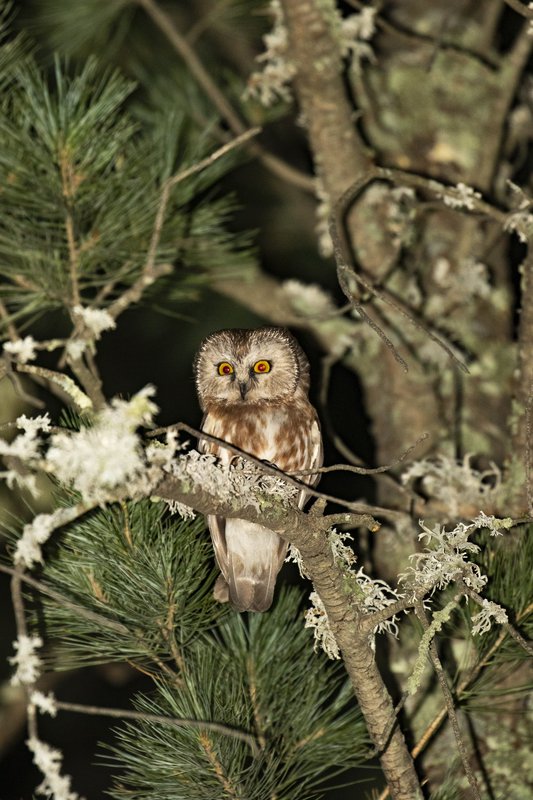
Saw-whet owls were some of the subjects of study.
Romey Swanson
Saw-whet owls were some of the subjects of study.
Romey Swanson
We froze when the saw-whet called from far up the canyon, sharp and insistent. Minutes later, it landed above us, calm and curious. Vindicated and wide-eyed, we knew this was just the beginning. That night, I realized how much I owed to Rich, not only for his trust and field wisdom but also for pulling me into these opportunities that would shape my path.
These mountainous sky islands rise from the surrounding desert sea like looming sentinels — cooler, wetter and full of life. But even as we uncover new wonders, ignoring what’s slipping away is impossible. The Davis Mountains tower above the Chihuahuan Desert, concentric rings of stacked habitats. Grasslands fringe the toe slopes, oak-juniper-pine woodlands rim the mid-slope, and rare pine-oak forests stand tall in elevated canyons below craggy peaks. This vertical diversity supports an array of owls, from burrowing and elf owls to the lesser-known flammulated and saw-whet.
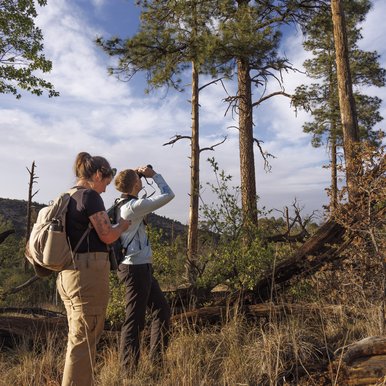
Field researchers peer into ponderosa pines in Davis Mountains Preserve, on the lookout for owl nests.
Sonja Sommerfeld
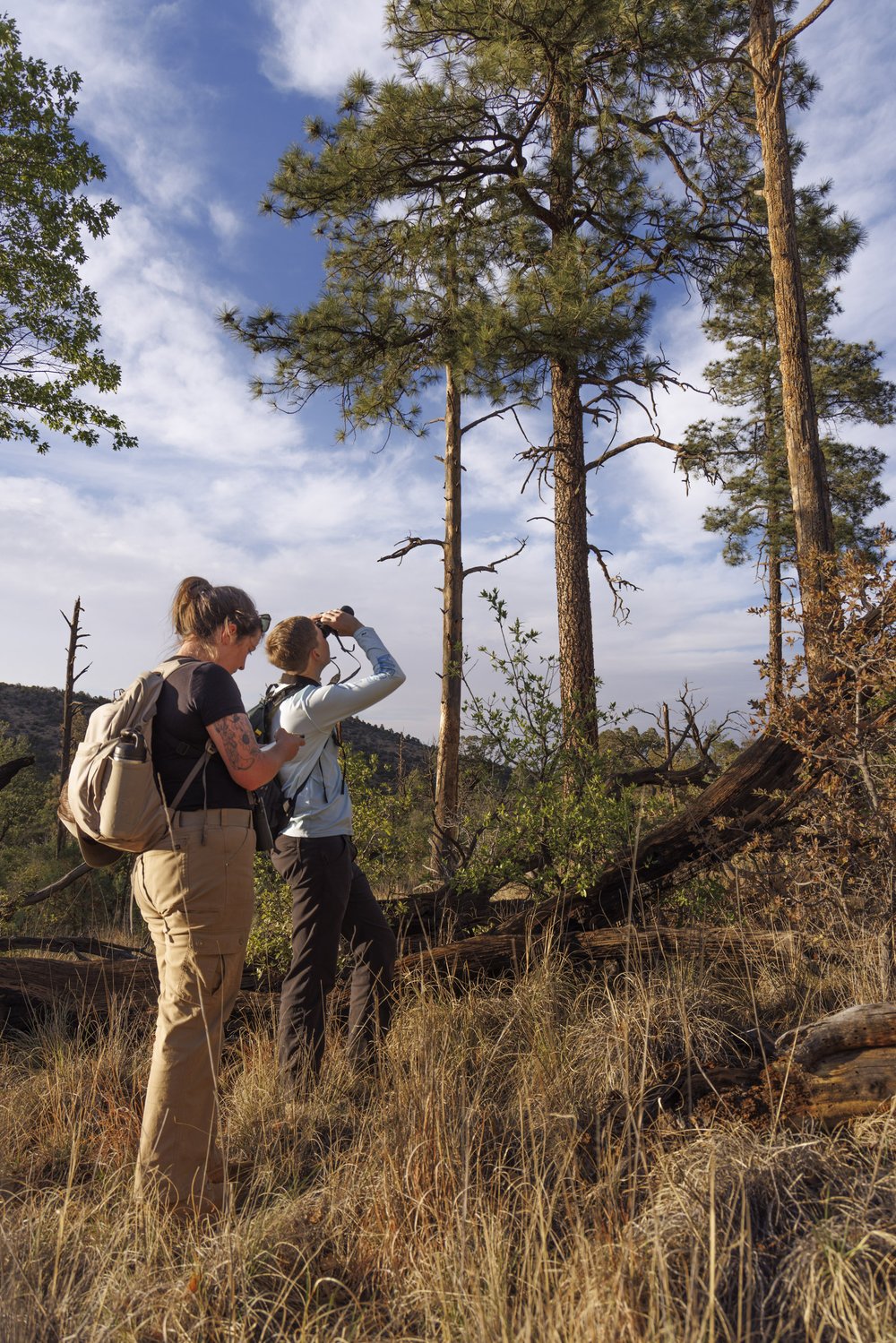
Field researchers peer into ponderosa pines in Davis Mountains Preserve, on the lookout for owl nests.
Sonja Sommerfeld
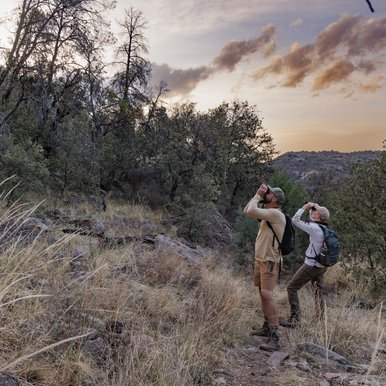
Researchers use binoculars to spot owls from a trail at dusk.
Sonja Sommerfeld
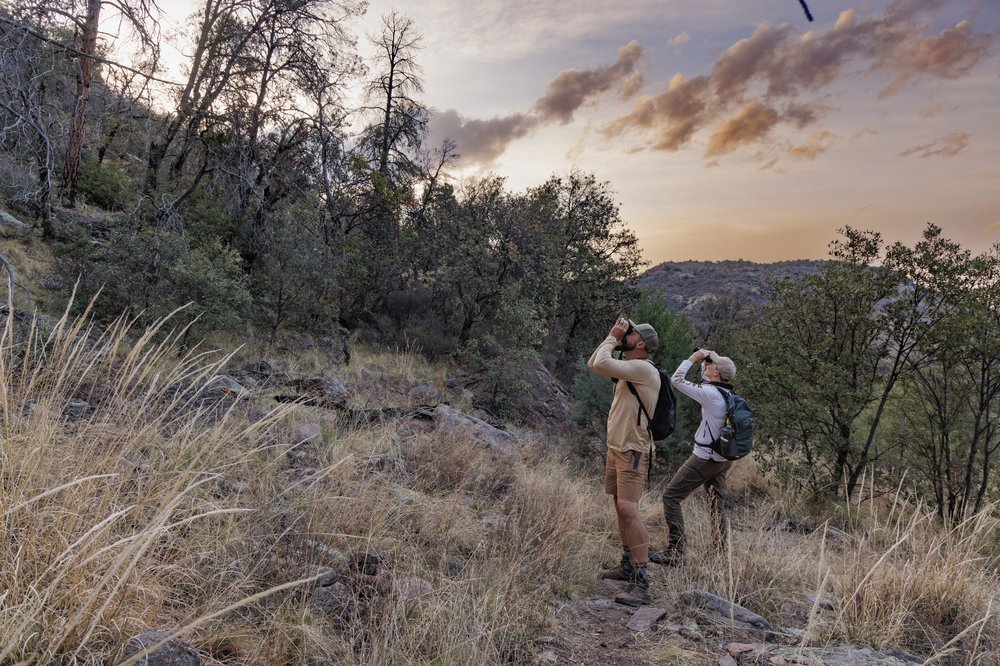
Researchers use binoculars to spot owls from a trail at dusk.
Sonja Sommerfeld

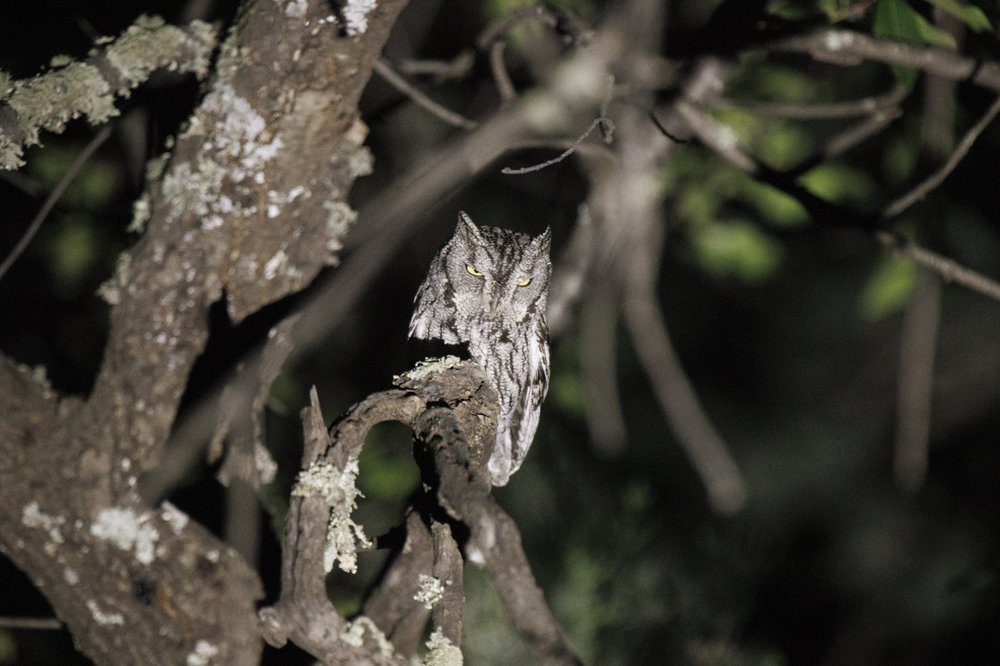
A western screech owl at night.
A western screech owl at night.
During our most recent surveys, the forest felt different – drier, quieter. Were the owls calling less? Were they gone?
Yet the upper elevations are in crisis. Drought has become more frequent and severe. Fires scorch forest canopies while drought-weakened trees fall victim to beetle infestations. Biologists estimate that nearly 75 percent of the preserve’s ponderosa pine habitat has been lost over the previous decades. During our most recent surveys, Rich and I agreed the forest felt different — drier, quieter. Were the owls calling less? Were they gone? This season, saw-whets vanished from once-reliable territories, and even the flammulated and screech-owls seemed subdued. It’s tempting to interpret this as cause and effect, but that’s why we let the data speak — systematically and without presumption — before letting emotion, alone, shape the story.
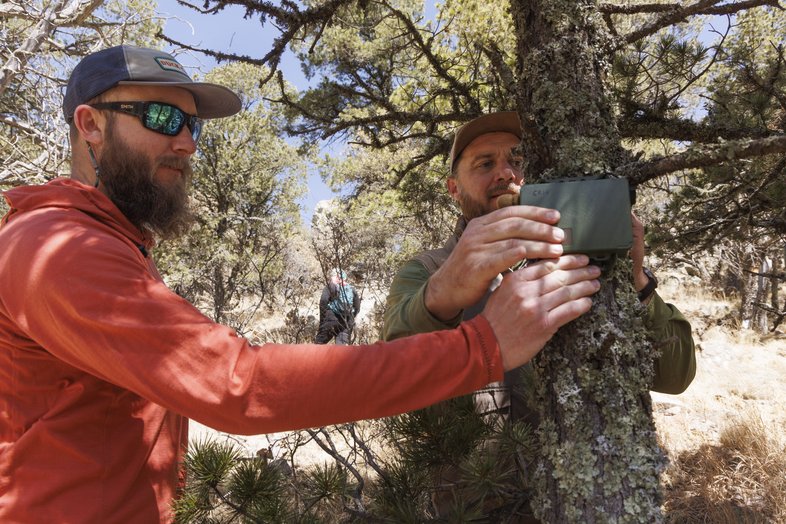
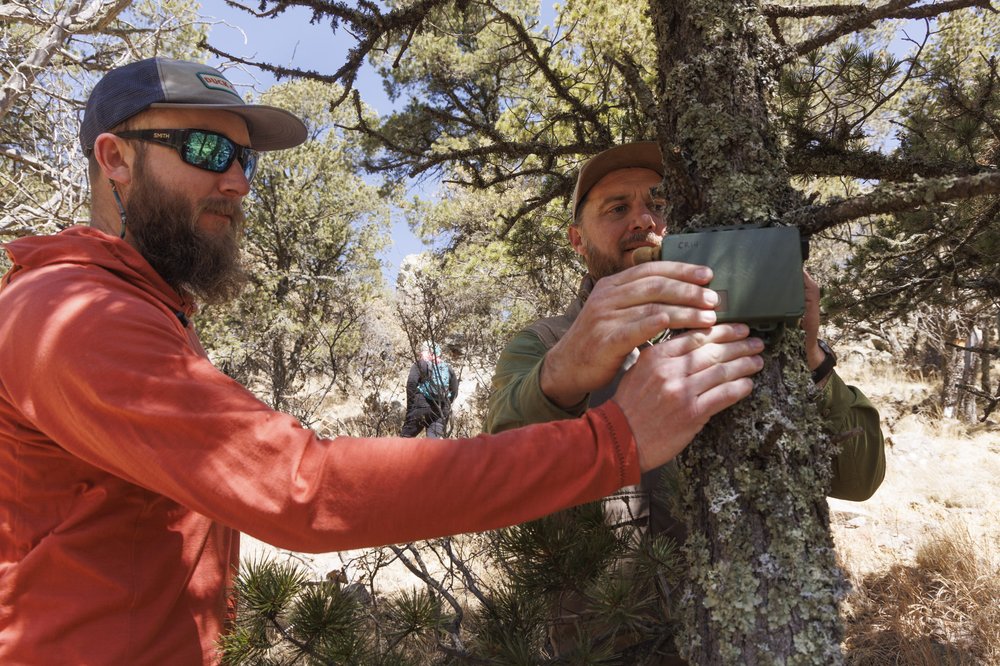
Two researchers set up recording units in the Davis Mountains.
Sonja Sommerfeld
Two researchers set up recording units in the Davis Mountains.
Sonja Sommerfeld
We needed structure to move beyond questions and observations. Simply listening wasn’t enough to understand a place changing this quickly. So, we turned to technology. Each autonomous recording unit we used is programmed to capture four hours of audio per night from mid-March through mid-August. In 2024 alone, this produced over 1.7 terabytes of audio, far more than we could gather in person, especially in the rugged terrain our owls prefer. These devices don’t tire, miss nights or get distracted by drinking margaritas and swapping stories on the cabin porch.
Still, we truth-test every detection of our target species and the surprises that pop up, like the northern pygmy-owl. I’ve spent plenty of late nights scrolling spectrograms, only to realize that a promising spotted owl signature is merely a dove cooing from its nearby roost. We pair recording data with traditional field surveys, enriching our understanding through direct observations that recorders miss, such as tree cavity use or territorial behavior. Together, these methods help us answer critical questions: When do owls arrive in their territory? Who’s nesting where? How do species overlap or avoid one another?
The most meaningful work I’ve done hasn’t been done alone. Before this project took shape, I knew I’d need a team as eager to “go feral” as I was. Crystal Ledezma, Adam Terry and Clayton Leopold answered that call. Together, they’ve shaped the culture of our field team, anchored by humor, trust and a shared love of wild places. Our afternoon briefings blend serious logistics with laughter and support; our late-night debriefs feel like storytelling circles, equal parts science and solidarity.
Thanks to Maureen Frank and the Borderlands Research Institute, the project has also grown to include student volunteers, field technicians and emerging researchers who now shape the work alongside us. One of them, Shelby duPerier, has adopted and expanded portions of the project as her official master’s thesis. In many ways, she stands at the bridge between generations, bringing new questions, fresh energy and a reflection of the fire we all felt when discovering this place for the first time. We came here searching for owls, but we built something bigger — a community.

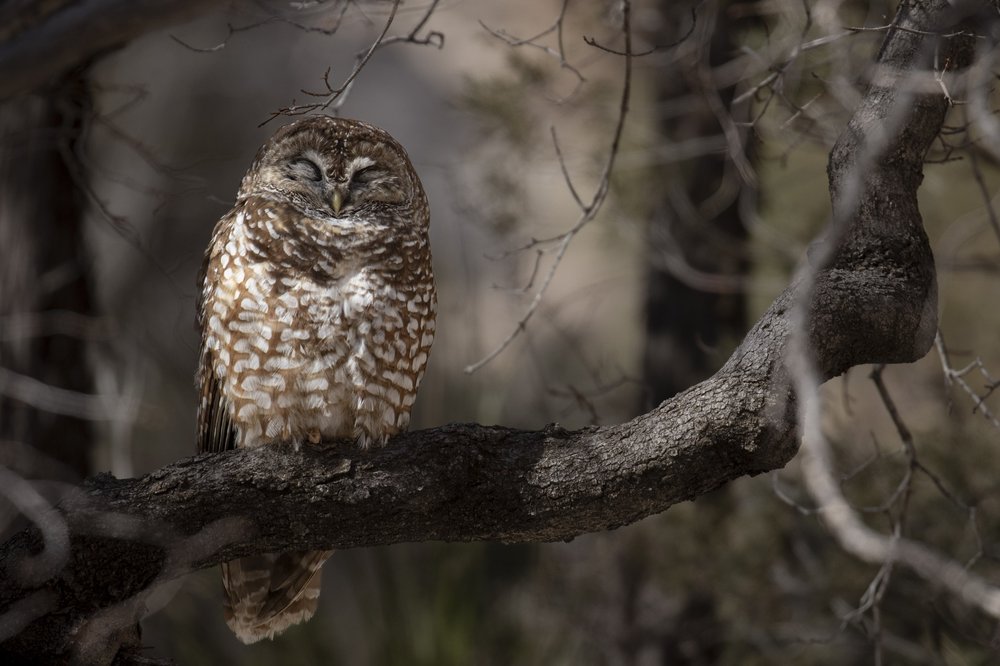
Mexican spotted owl sleeping on a tree branch.
Romey Swanson
Mexican spotted owl sleeping on a tree branch.
Romey Swanson
What the Owls Are Doing
Through thousands of hours of recordings and surveys, the owls began to speak, and what they revealed moved us from rumor and whisper to confirmation and growing wonder. As expected, western screech-owls are the preserve’s most abundant and vocally active species, detected at every recording site. Elf owls, the world’s smallest, have surprised us by nesting as high as 6,600 feet, possibly a state record. We’ve also expanded our understanding of flammulated owls, documenting them at seven additional sites beyond those Rich and I initially found. Our work has helped us better understand their calling patterns, habitat preferences and migratory timing. Saw-whet owls, the spark of the project, offered our most emotional discovery with a confirmed fledgling owlet and Texas’ first successful breeding record. But two years later, they’ve fallen silent. Have we lost them to drought? Have they moved? Or are they still out there, just quiet?
These findings help form the foundation of Shelby’s thesis, and with one more season ahead, we’re still collecting data. We’ve recorded only a handful of single-night vocalizations from the Mexican spotted owl — a federally threatened species known to breed in these mountains. The mysteries of this species persist: Is it a wandering bird we’re hearing? A dispersing juvenile? Or simply something we haven’t yet learned to interpret? This project has provided us with answers, but it’s also led us to better questions.
We wrapped up the 2025 field season, our most productive and meaningful yet. When I left the preserve this time, I felt the same ache I did as a kid leaving summer camp: I’d miss my friends. I’d miss the timbre of wind moving through the pines. I’d miss the clarity of purpose within this place.
And, in that moment, I understood something I hadn’t before. I wasn’t born a generation too late. I arrived right on time. On one of our final nights, a full moon hung high and bright in the twilight. Rich, Crystal, Adam and I finally heard the low, staccato call of a Mexican spotted owl rising from the canyon deep beneath us, the voice we’d waited years to hear. It was a gift in the darkness. Unseen, but deeply felt.
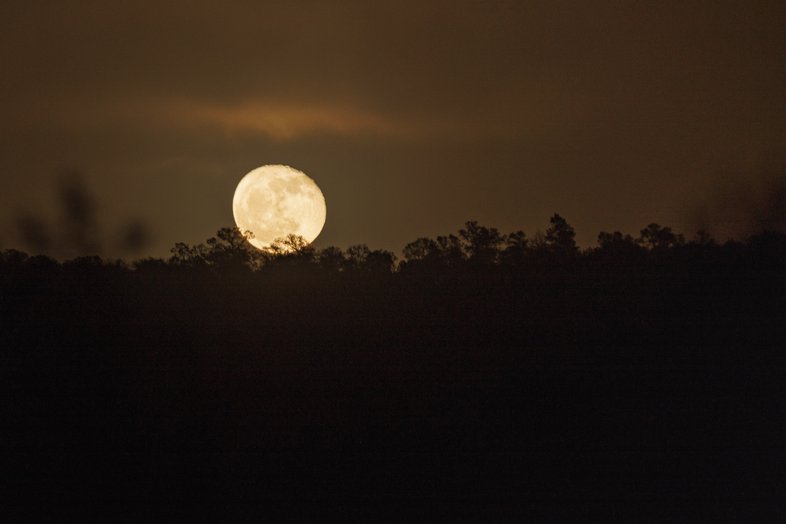
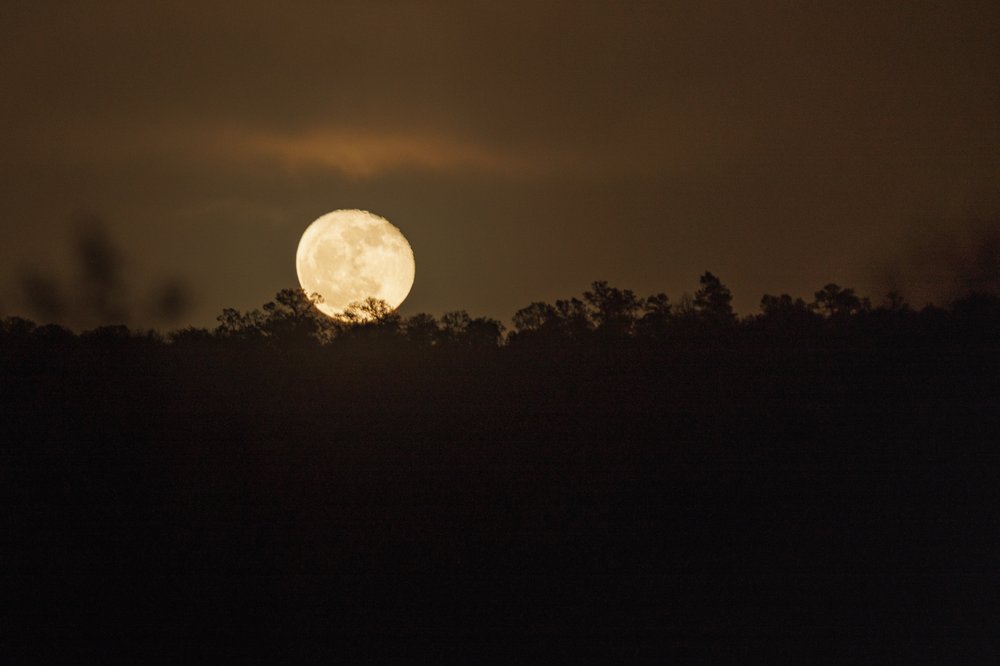
Night falls on the Davis Mountains.
Sonja Sommerfeld
Night falls on the Davis Mountains.
Sonja Sommerfeld
